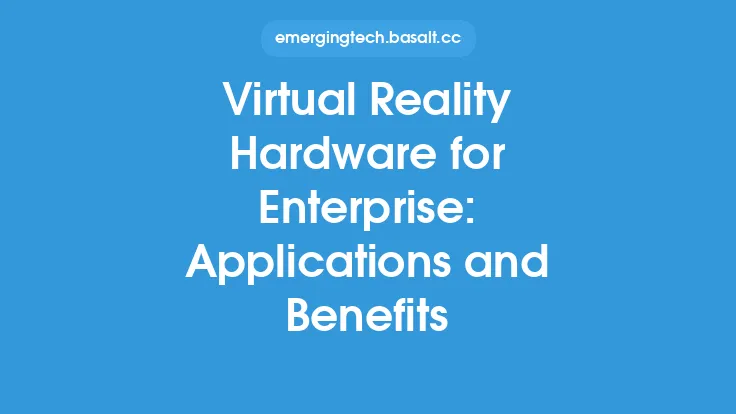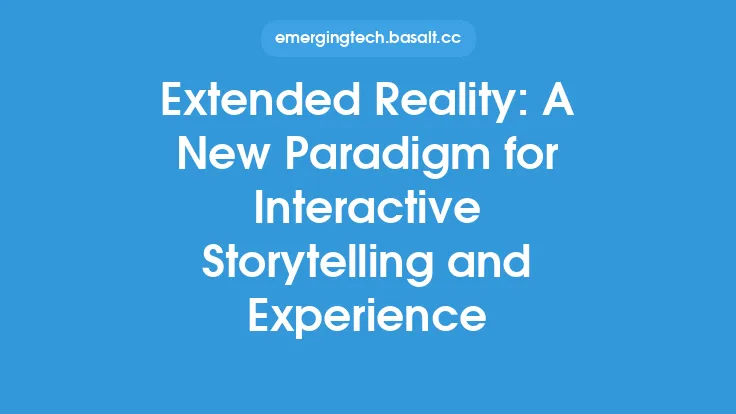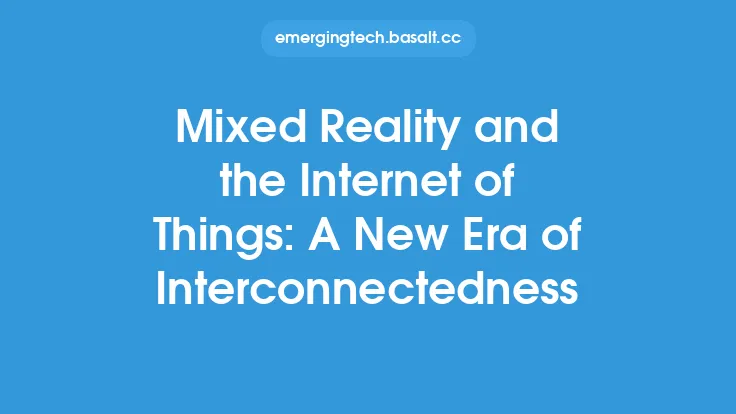The advent of virtual reality (VR) has opened up new avenues for creative expression, allowing artists to push the boundaries of their craft in ways that were previously unimaginable. By leveraging the immersive and interactive capabilities of VR, artists can create entirely new forms of art that engage the viewer on a deeper level. This new medium has given rise to a fresh wave of innovation, as artists experiment with the unique properties of VR to create immersive, interactive, and dynamic experiences that challenge traditional notions of art.
Introduction to Virtual Reality Art
Virtual reality art is a rapidly evolving field that combines cutting-edge technology with creative vision. By using VR headsets, controllers, and other specialized equipment, artists can create interactive and immersive experiences that simulate real-world environments, fantastical worlds, or even abstract concepts. This new medium has attracted a wide range of artists, from painters and sculptors to musicians and performers, all of whom are eager to explore the creative possibilities of VR. With the ability to manipulate virtual objects, environments, and even time and space itself, VR artists can create complex, layered, and highly engaging works of art that defy traditional categorization.
The Creative Process in Virtual Reality Art
The creative process in VR art is fundamentally different from traditional art forms. Rather than working with physical materials like paint, clay, or stone, VR artists use software and hardware to create virtual objects, environments, and experiences. This requires a deep understanding of programming languages, 3D modeling, and other technical skills, as well as a strong artistic vision. Many VR artists begin by sketching out their ideas in traditional media, such as drawing or painting, before translating them into virtual reality using specialized software like Unity or Unreal Engine. Others may work directly in VR, using tools like Tilt Brush or Medium to create interactive and immersive experiences.
Technical Aspects of Virtual Reality Art
From a technical perspective, VR art relies on a range of advanced technologies, including computer-aided design (CAD) software, 3D modeling, and programming languages like C++ or Java. Artists must also have a strong understanding of human-computer interaction (HCI) principles, as well as the psychological and physiological effects of VR on the human experience. To create immersive and interactive experiences, VR artists must carefully balance factors like frame rate, resolution, and latency, all of which can impact the viewer's sense of presence and engagement. Additionally, VR artists must consider the limitations and capabilities of different VR hardware platforms, such as Oculus, Vive, or Daydream, each of which has its own unique strengths and weaknesses.
Applications of Virtual Reality Art
The applications of VR art are diverse and far-reaching, with potential uses in fields like education, therapy, and entertainment. For example, VR art can be used to create interactive and immersive educational experiences, allowing students to explore complex concepts and historical events in a highly engaging and memorable way. VR art can also be used in therapy and treatment, providing a safe and controlled environment for patients to confront and overcome phobias, anxieties, and other psychological challenges. In the realm of entertainment, VR art can be used to create new forms of immersive and interactive storytelling, such as virtual reality films, games, and experiences.
The Future of Virtual Reality Art
As VR technology continues to evolve and improve, we can expect to see even more innovative and groundbreaking applications of VR art. With the development of advanced technologies like augmented reality (AR) and mixed reality (MR), artists will have even more tools and possibilities at their disposal. Additionally, the growing availability of VR hardware and software is making it easier for artists to create and share their work, which is likely to lead to a proliferation of VR art in the coming years. As the field continues to grow and mature, we can expect to see new forms of VR art emerge, pushing the boundaries of what is possible and redefining the very notion of art itself.
Challenges and Limitations of Virtual Reality Art
Despite the many exciting possibilities of VR art, there are also several challenges and limitations that artists must contend with. One of the main challenges is the high cost of VR hardware and software, which can make it difficult for artists to access the tools and technology they need. Additionally, the complexity of VR technology can be intimidating for artists who are new to the field, requiring a significant investment of time and effort to learn the necessary skills. Furthermore, the immersive and interactive nature of VR art can also raise important questions about the role of the viewer and the nature of the artistic experience, challenging traditional notions of art and its relationship to the viewer.
Conclusion
Virtual reality art is a rapidly evolving field that is pushing the boundaries of creative expression and challenging traditional notions of art. By leveraging the immersive and interactive capabilities of VR, artists can create entirely new forms of art that engage the viewer on a deeper level. While there are certainly challenges and limitations to VR art, the potential benefits and applications are vast and far-reaching, with potential uses in fields like education, therapy, and entertainment. As VR technology continues to evolve and improve, we can expect to see even more innovative and groundbreaking applications of VR art, redefining the very notion of art itself and opening up new possibilities for creative expression.





